“Gung-ho” is a term meaning being overly enthusiastic or energetic. This term originated from the Wade-Giles name of the Chinese Industrial Cooperatives (CIC), and their slogan was Gung-ho, which translates into working together or a cooperative. The term was later adopted by Evans F. Carlson, a US Marine colonel who was involved with the CIC, for his 2nd Marine raiders. In 1943, there was a war film directed by Ray Enright and starring Randolph Scott titled Gung Ho!: The Story of Carlson’s Makin Island Raiders, and the term entered the English language. You may find more about the history of the term in this NPR article.
At RBML, what reminds us of Gung-ho is the Indusco Inc. records. This collection contains records from the Chinese Industrial Cooperatives (CIC, 工業合作社/工合), the China Aid Council (CAC, 美國援華會), and United Service to China (USC, formerly United Relief to China or United China Relief, 美國援華聯合會/美國援華救濟聯合會). These organizations were active during the Second Sino-Japanese War (1937-1945) in supporting Chinese war efforts against Japanese aggression in China. The CIC in particular was also known as a movement established in China by a group of westerners and Chinese activists, and was supported by Chinese citizens and politicians at the time to aid in industrial production. The cooperatives mobilized civilians including the unemployed, refugees, women, children, artists, and all citizens to work together to support the country during the war.
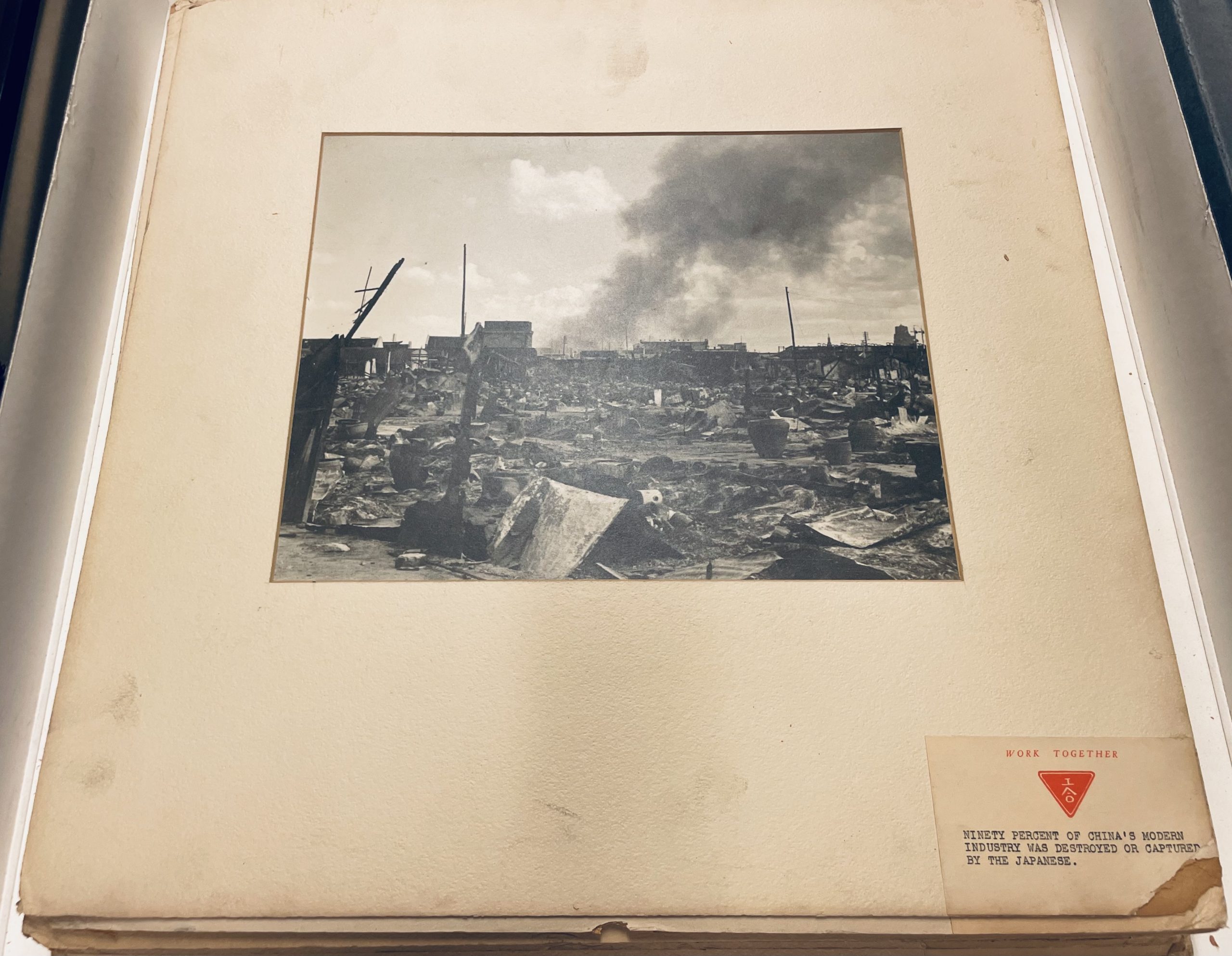
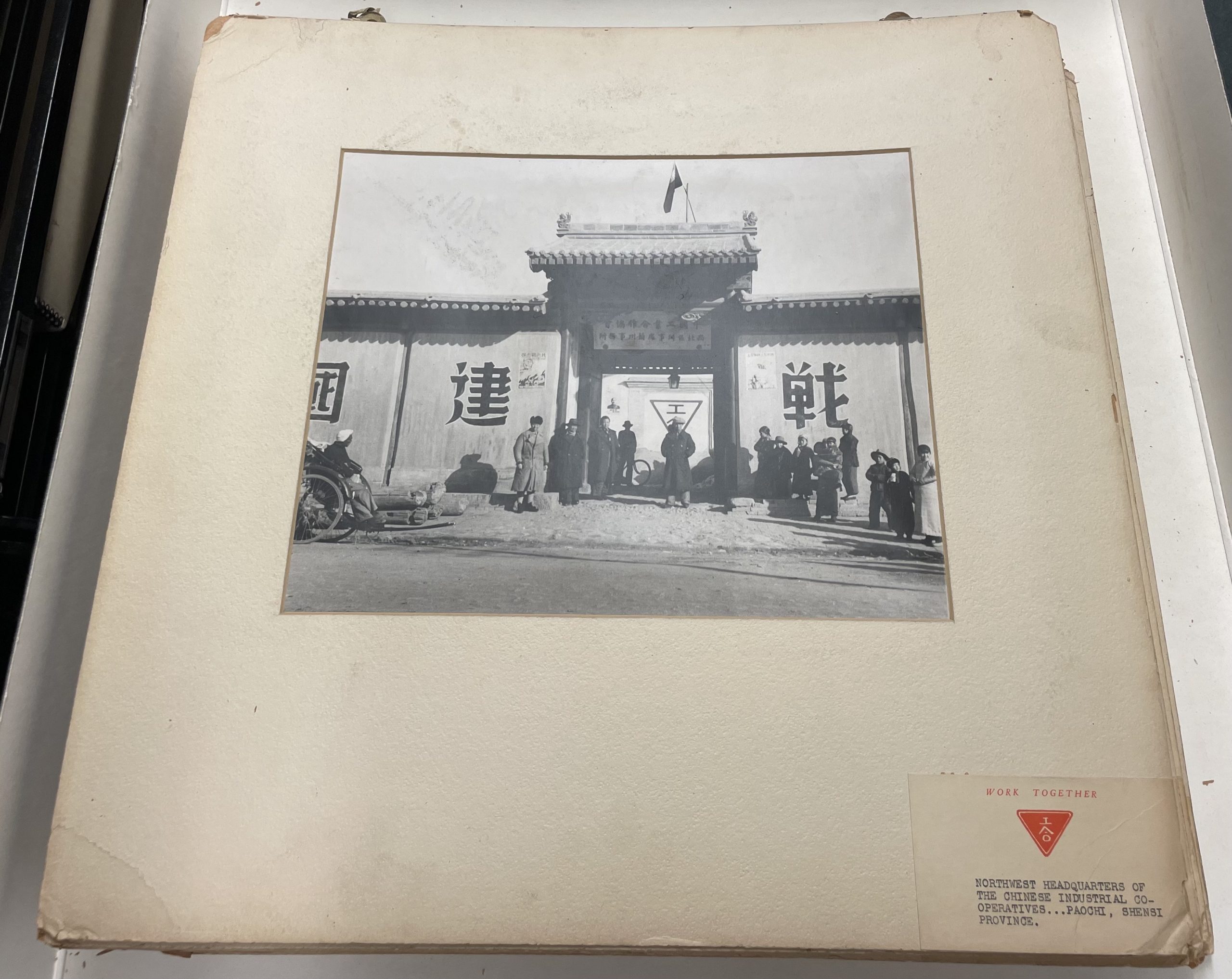
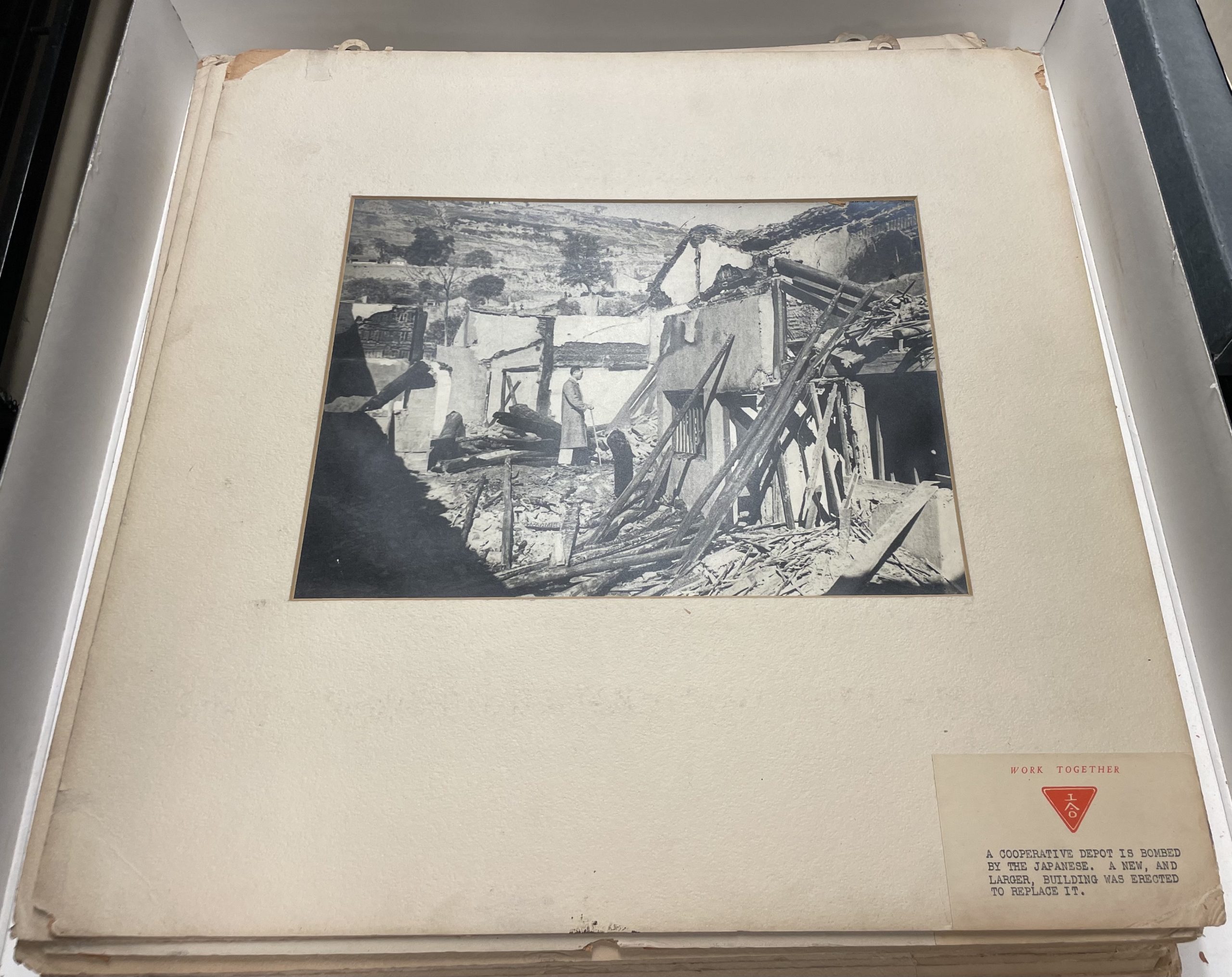
Mounted Photographs: CIC people and activities, circa 1940-1945, Flatbox 546
The Indusco records are popular among researchers who are interested in the activities of these organizations during wartime China, as well as in the industrial production and everyday life in the Northwestern region and the early development of the Chinese communist party and their relation to the westerners in China. The materials in this collection include correspondence, administrative and financial records, reports, periodicals, photographs, newspaper clippings, scrapbooks, maps, artworks, and so on. The collection also contains records of people who were associated with the organization, including notable figures such as Edgar Snow, Rewi Alley, H. H. Kung, Soong Qingling, Soong Mayling, and Mao Zedong.
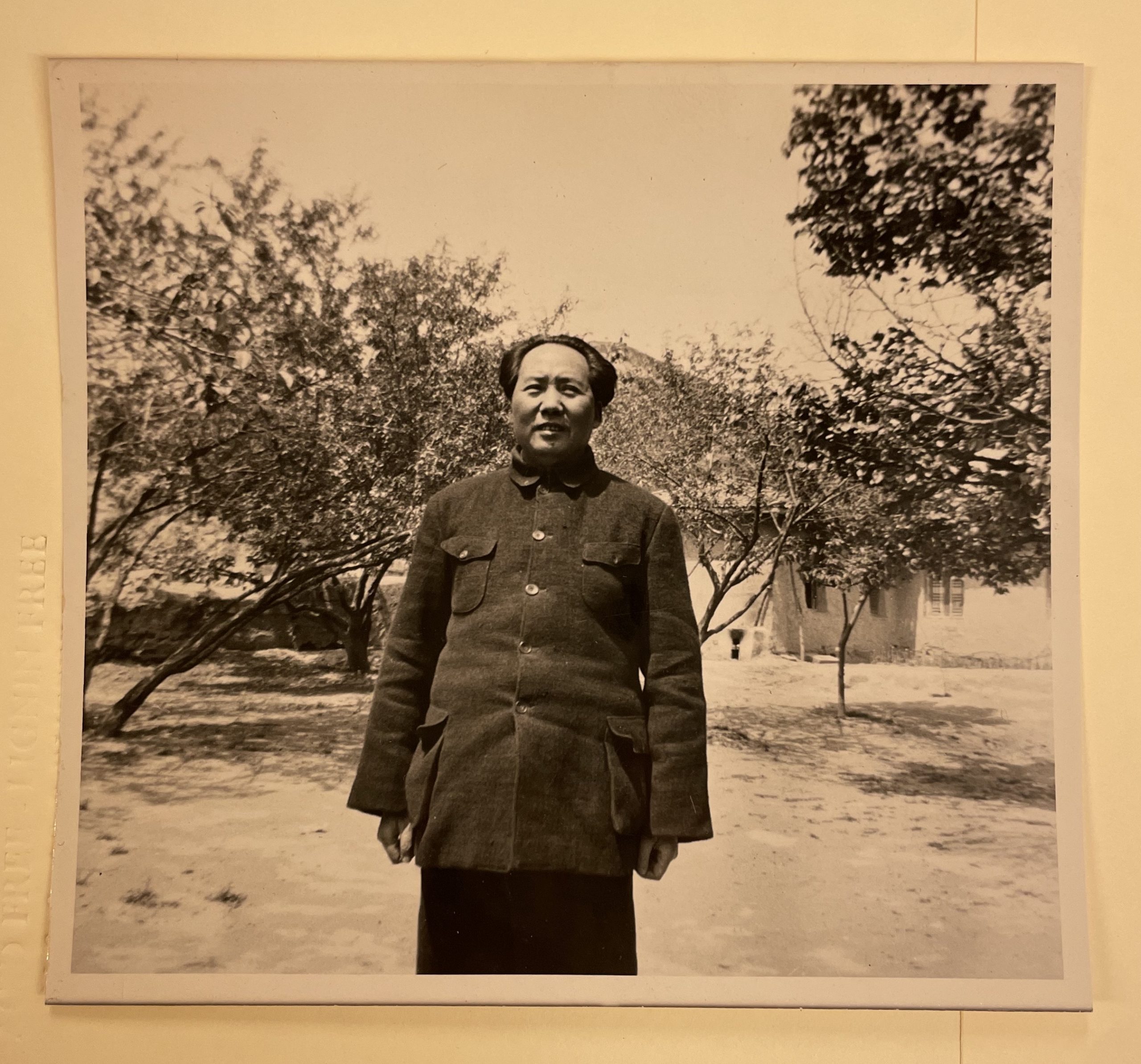
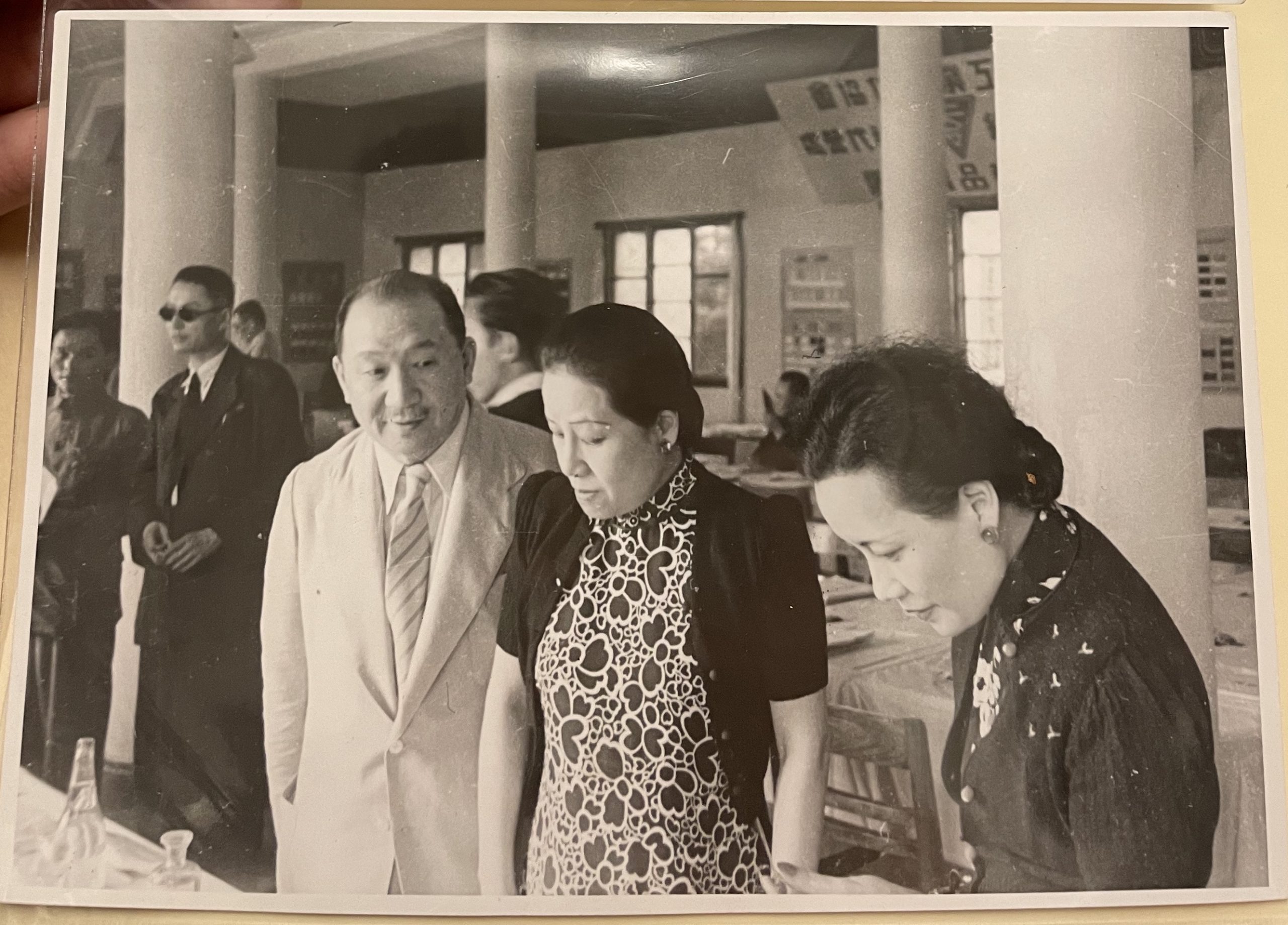
Left: Mao Zedong in Yan’an. Right: H. H. Kung and Soong Ai-ling (Madame Kung), Soong Mayling (Madame Chiang) attended the Chongqing opening of an exhibition of CIC products, Flatbox 552, Photograph scrapbook arranged by subject, circa 1940-1945.
The materials were rehoused and additional descriptions were added to this series of the finding aid. While processing these oversize items, I found some interesting material. One of the highlights that stood out from the reprocessing work was the works of commissioned artists who contributed to the visual documentation of everyday people living and working in the cooperatives. The artworks provide a visual record of the workers’ daily life at the cooperative and depict how their labor contributed to the industrial production in support of the war effort. Moreover, some artworks embodied various visual elements from Chinese culture and literature. The following are some artworks from the collection and a brief chronology/biographical note of the artists.
Han, Leran 韓樂然 (1898-1947), a Korean-Chinese watercolor painter.
1898 born in Longjing, Yanji of Jilin.
—– studied at the Shanghai Art Professional School
1923 joined the Communist Party as the first party member of the Korean nationality
1929 studied in France
1940s traveled throughout the northwestern region including Xinjiang, Gansu and Qinghai
1946-1947 traveled to Dunhuang and Xinjiang for an archaeological study of the Silk Road, imitating murals using oil painting and watercolor painting for the first time in China’s art history
1947 died in an air crash during the flight from Urumqi to Lanzhou
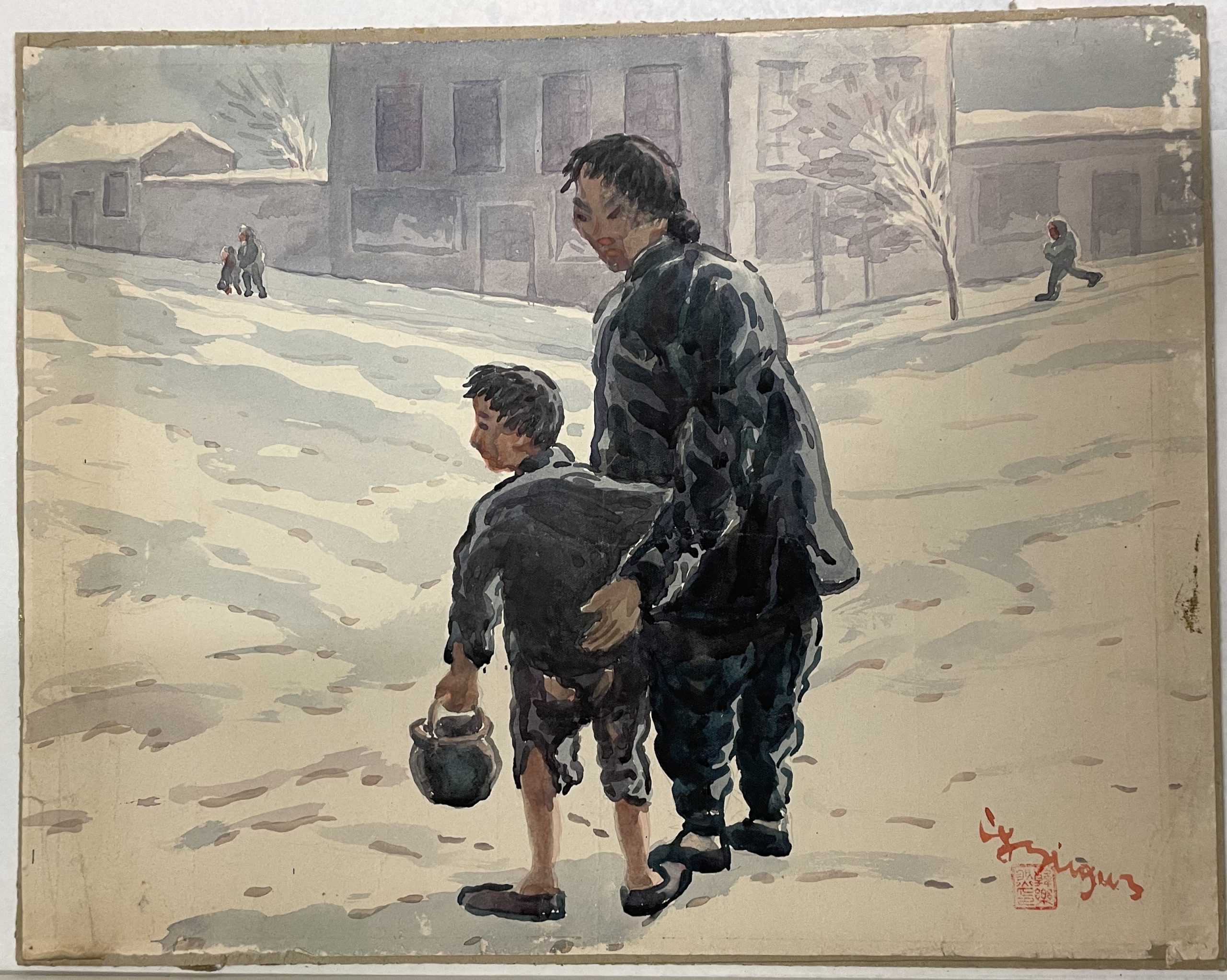
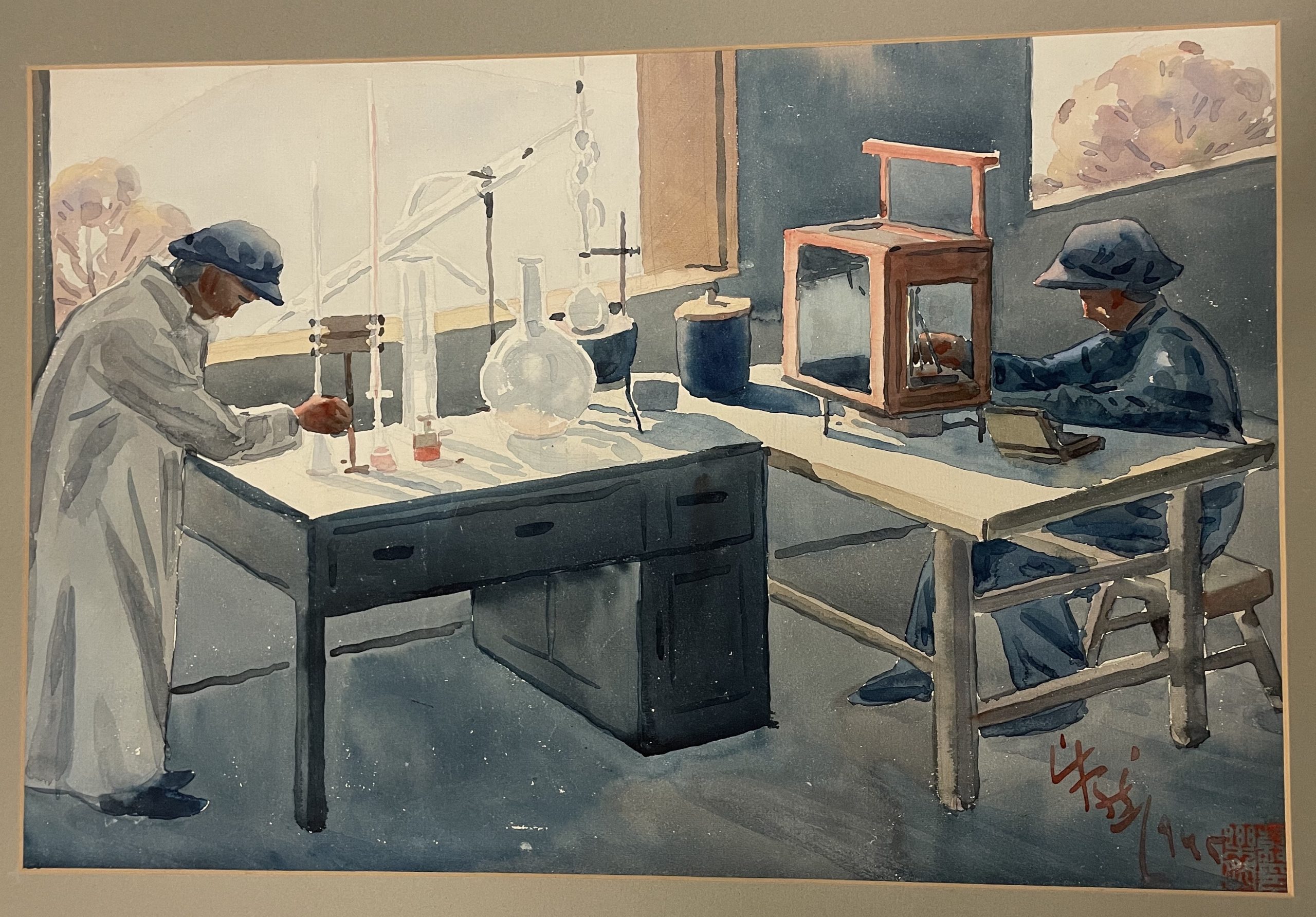
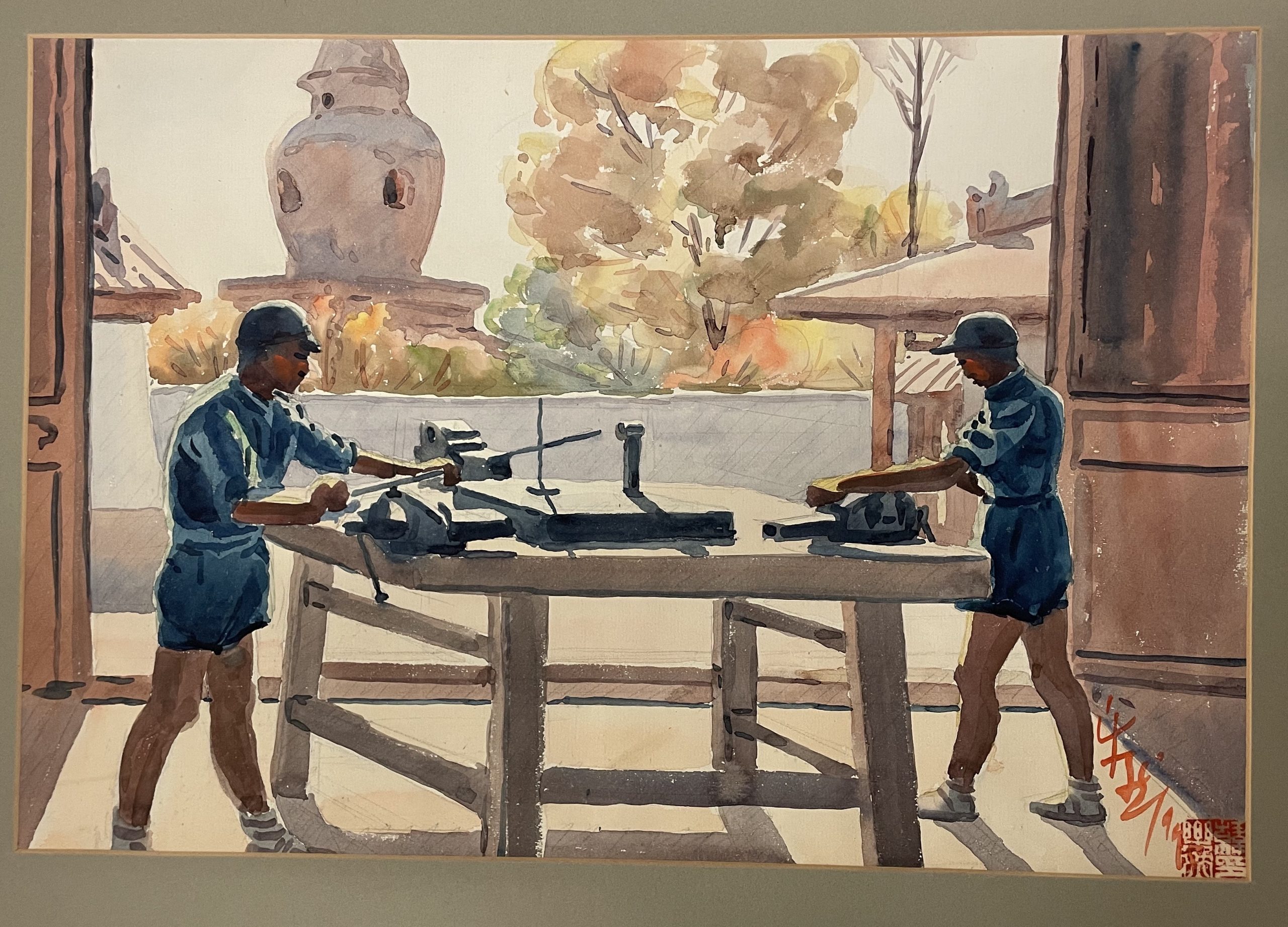
Left: Painting of woman with boy during winter; Center and Right: Mounted watercolor paintings, depicting CIC workers, by Han Leran, 韓樂然, circa 1944, Flat Box 544, Folder 3
Li, Hua (simplified: 李桦; traditional: 李樺, 1907-1994), known as a printmaker and a Chinese woodcut artist, created the well-known “Roar China” print in 1938.
1907 born in Panyu, Guangdong
1926 graduated from the Municipal Guangzhou Art School and taught
1930 studied fine arts at the Kawabata Art School in Tokyo, Japan
1932 returned to Guangzhou and began to learn woodcutting art
1934 founded the Modern Woodcut Society at the Guangzhou Art School
1938 active in propaganda work, documented battles in ink and charcoal drawings
1949 became a faculty of the newly opened National Beiping Arts College (currently known as the Central Academy of Fine Arts)
1947 produced notable woodcut series Raging Tide
1953 joined the Communist Party of China
1994 died in Beijing at the Peking Union Medical Hospital
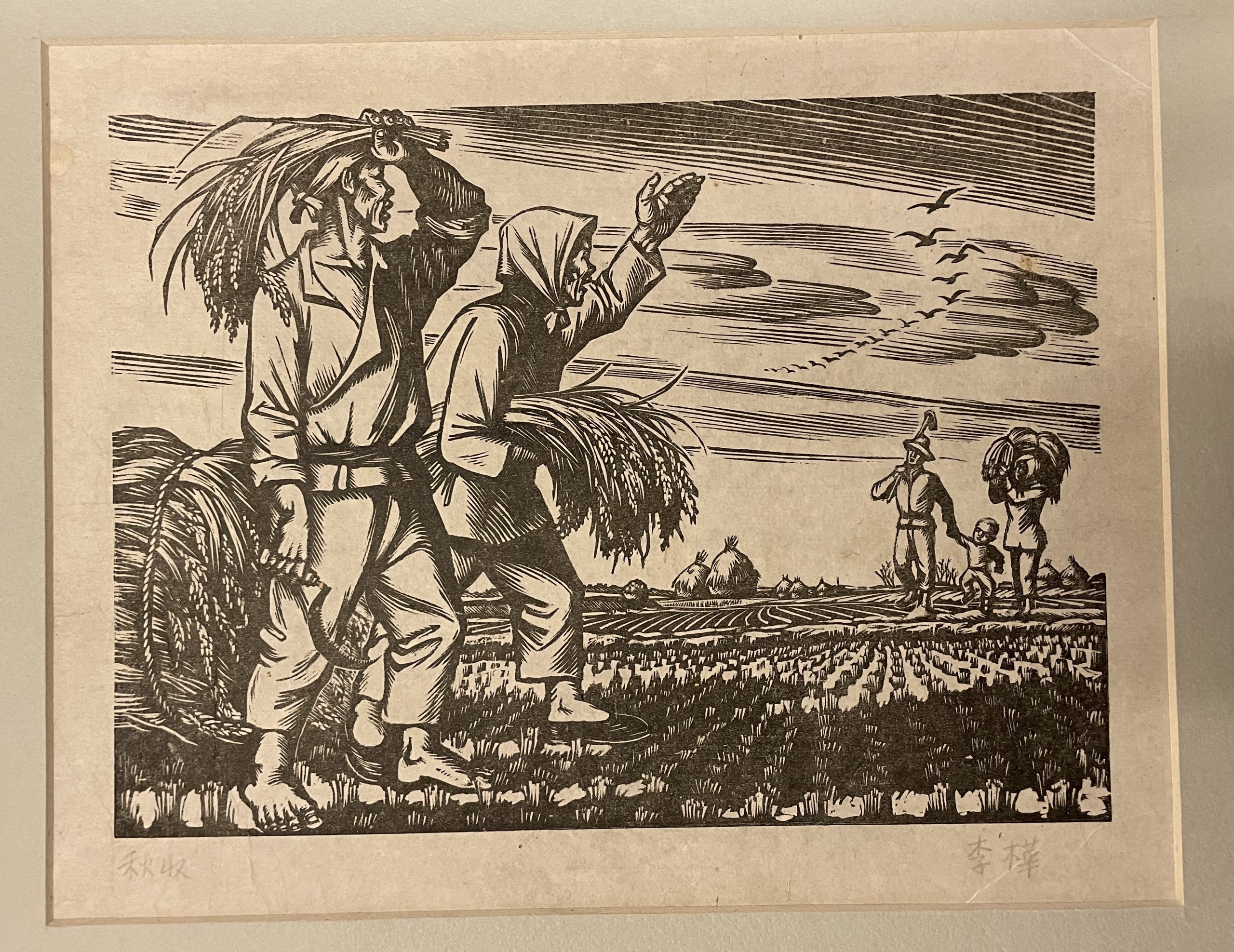
Autumn Harvest / 秋收 by Li Hua, 李樺, circa 1942, Flat Box 549 Folder 1
Fu, Shuda (Traditional: 傅叔達; Simplified: 傅叔达), a Guohua painter. According to Michael Sullivan’s Modern Chinese Artists: A Biographical Dictionary (page 40), a brief timeline of Fu Shuda noted in the following:
“…trained in Beijing. 1937 went to the U.S., where he was engaged in book illustration. Dec. 1941 in Hong Kong. Escaped to Chongqing, where he worked for CIC; then after teaching in Guilin, worked for the British government in India. 1945 in Singapore at the Japanese surrender. 1948 returned to Shanghai, where he worked as a professional artist. After 1949, suffered from cancer. 1960 died during or after a period of imprisonment. His wife, a teacher, was also imprisoned.” However, other researchers have different speculations about birth and death dates (possibly 1910-1973) based on other sources such as US immigration records and so on.
While Fu Shuda was at the CIC in the 1940s, he also designed motifs for carpets and embroidery, which workers used in the cooperative’s production of carpets. Two sample books by him are present in the oversized materials: Carpet motif sample (地毯樣本), and Embroidery motif sample (繡花樣本). Both were published by the CIC research institute (工合研究所) in collaboration with the West China Union University, 华西大学博物馆 (currently known as the Sichuan University Museum, 四川大学博物馆).


Covers of Carpet motif sample (地毯樣本), and Embroidery motif sample (繡花樣本). Published by the CIC research institute (工合研究所).


Left: Sample Page from sample books, 地毯樣本, circa 1944, Box Flat 539 Folder 1, Indusco Inc records. Right: “Indusco Display”, 1946 August 7, Box 80; ABMAC Records. The carpet hung on display was created based on Fu Shuda’s designs.
Another prolific artist-in-residence was Tai Cheng Yih(戴成義), an etching artist. I was unable to find any information about him, but the following are some artworks by him.
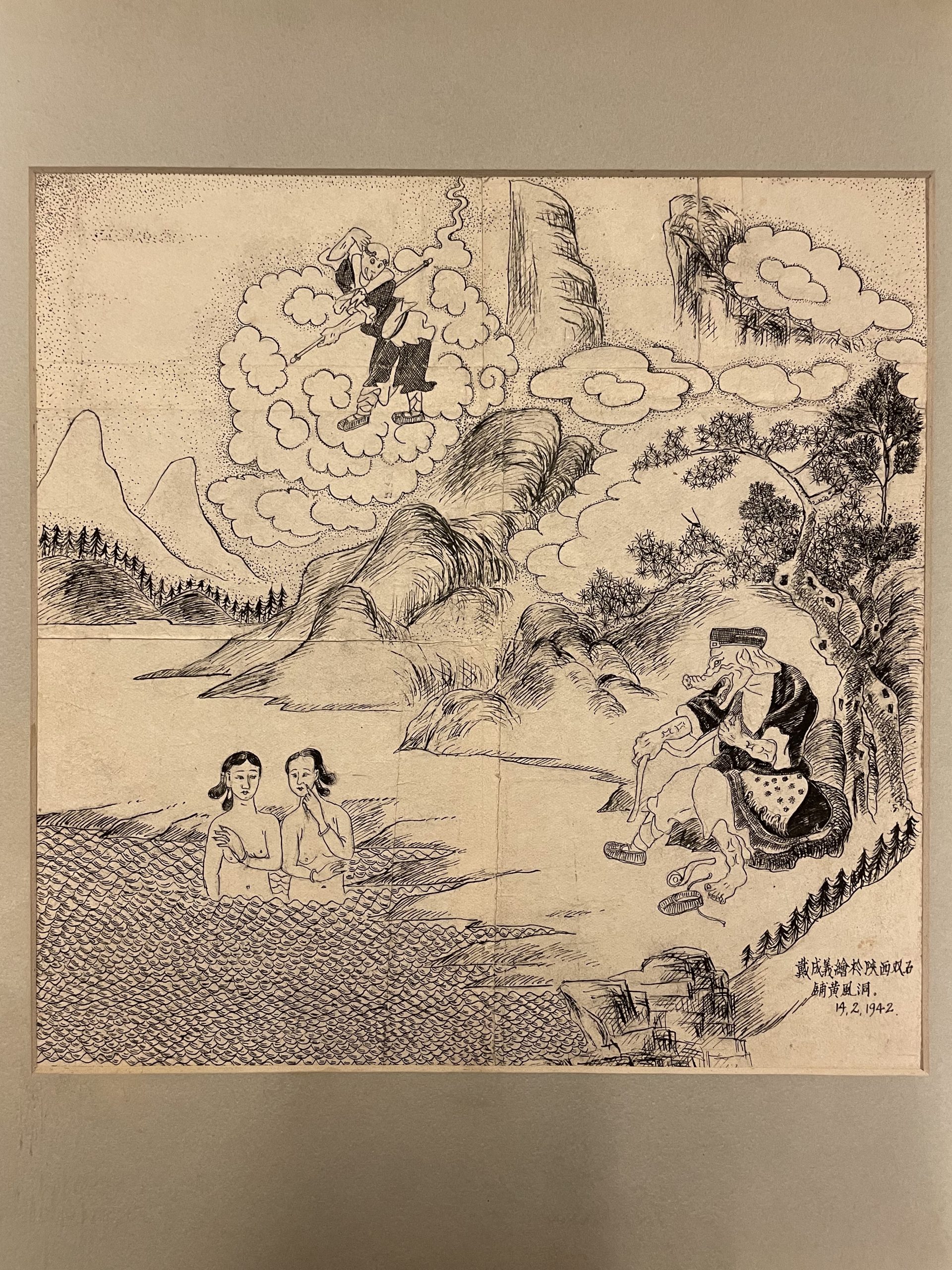

2 Etching depicting scenes from the Journey to the West by Tai Cheng Yih (戴成義), 1942. Flat Box 549 Folder 1. February 14. Left: Scene from Chapter 72 of Journey to the West where Pigsy was tempted by the bathing women. Right: Scene from Chapter 81: Tripitaka abducted by demon lady, returning to her mountain home with him.
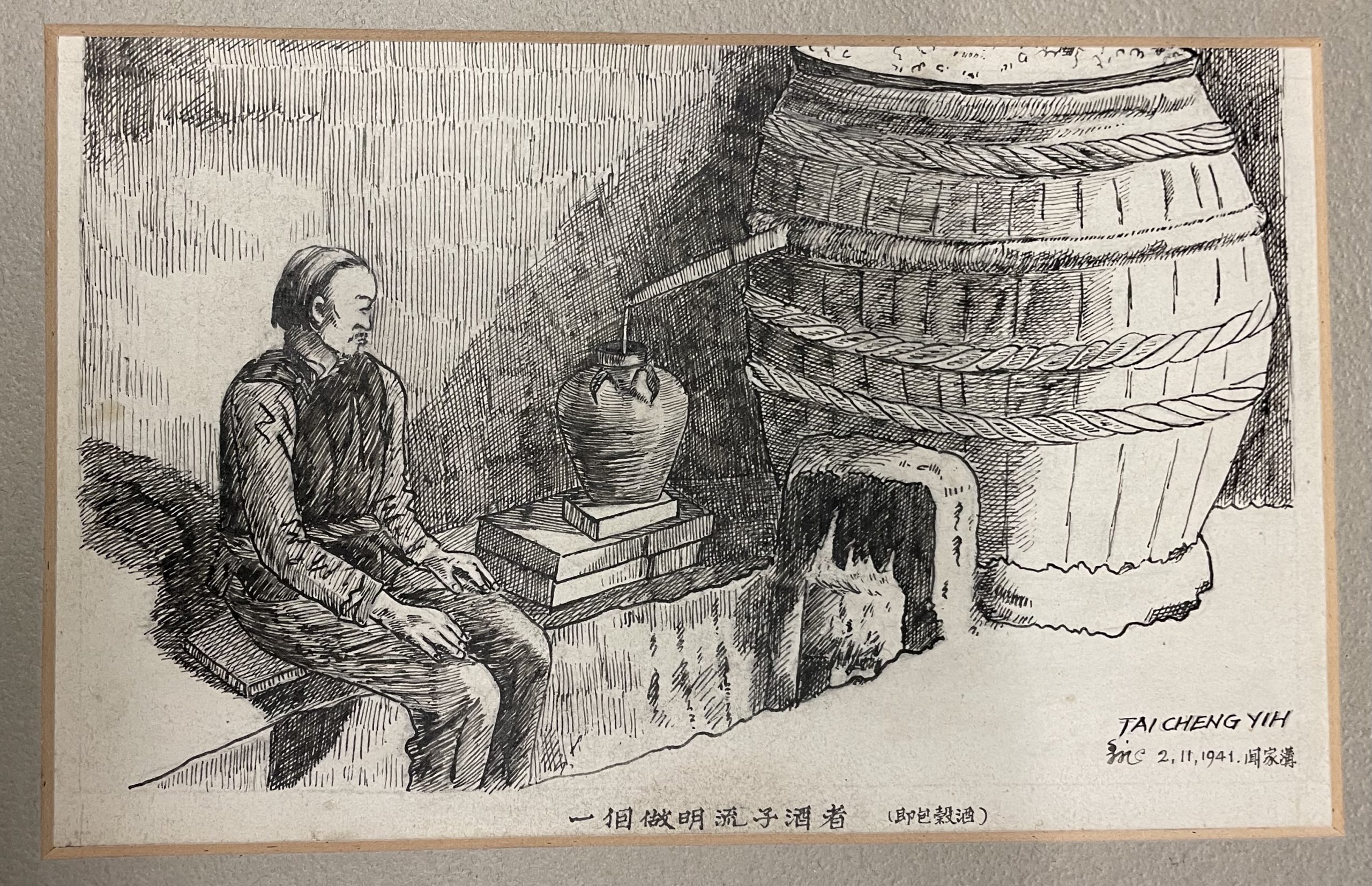

Left: Mounted etching, Making Baohejiu, 一個做明流子酒者(即包榖酒), 1941 February 11, by Tai Cheng Yih 戴成義, at Wenjiagou, 闻家溝. Right: Weaving, 織布, 1941 February 9 By Tai Cheng Yih 戴成義, Flat Box 542 Folder 2
Overall, the processing and rehousing of the oversized materials in this collection opened the door to a rich visual representation of everyday life at the CIC in wartime China. The artworks and the photographs in the oversize scrapbooks showcase the people, their production, and their life at the cooperatives. For more information about the collection, please visit the finding aid Indusco Inc. records.